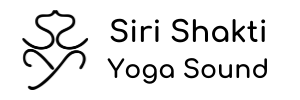Breath of Life

Breath and Pranayama in Kundalini Yoga
“May you never be afraid of your own excellence. With every breath you have the opportunity to change, to transform. Use the breath to elevate yourself to that highest destiny, and allow the breath to carry you across any and every obstacle.” Yogi Bhajan
Breath
Did you know that breathing is the only thing you can do both consciously and unconsciously? Most of us breathe unconsciously most of the time. Doing this takes from us a tremendous opportunity, the opportunity to wake up and become conscious of each moment. Being breath conscious gives you the power to exercise your will and take control of your most fundamental, constant human act.
The breath is a fundamental tool of Kundalini Yoga. Mastery of the breath is a foundation for
- promoting healing and vitality,
- opening the range and creativity of your emotions,
- controlling the moods,
- developing concentration, and
- promoting a feeling of connectedness.
The breath is both gross and subtle. The gross aspect is the blend of oxygen, nitrogen and other elements that chemically constitute the air. The subtle aspect is the prana, or vital force that energises the mind, body and consciousness.
Prana
In yogic terms Prana is the life force that comes through our breath. Taking in breath is more than just taking in the oxygen needed to keep us alive. It is taking the power of the Universe in yourself, bringing vitality and strength.
The sage, Vivekananda, defined prana as “A manifestation of the universal power, indefinite and omnipresent.”
Ancient yogi’s claimed that “wherever there is life in the Universe there is Prana, without Prana the Universe would be dead, lifeless matter”
Pranayama
Yama means control. Pranayama, the term we use in yoga, means directing the current of the vital prana energy to light your body to its most luminous. Allowing yourself to take in enough breath is the first thing you need to do, but is often the last thing we remember. Breath relaxes. It also gives you clarity and cool-headedness, because it brings oxygen and nitrogen to the brain cells and pumps spinal fluid to the brain. It prevents the build up of toxins in the lungs, and as the lung capacity expands, your pituitary gland, regulator of all the hormones in your body, becomes stimulated. (From Bountiful Beautiful Blissful by Gurmukh)
Pranayama is an important part of Kundalini Yoga. Each class commences with the practice of conscious breath control, serving to create health, vitality and balance.
Here are some different types of breathing that are used in Kundalini Yoga:
Long Deep Breathing or Yogic Breath
When we breathe long and deep we are able to fill and empty our lungs completely, bringing more life giving oxygen and prana, and allowing all the air we no longer need to be expired. Long Deep Breathing starts by filling the abdomen, then expanding the chest and ribs, and finally lifting the upper chest. On the exhale the movement is reversed, the upper chest deflates, then the ribs and finally the abdomen comes back towards the spine. The breath may also be suspended on either the inhale or the exhale.
When you allow your lungs to completely fill and empty you release the old stale air that your body no longer needs. In yoga we call this apana, that which no longer serves you both physically and emotionally/mentally. Releasing apana has a positive effect on your physical well being and releases mental and emotional stress.
Breath of Fire (Agni Pran)
Breath of fire is a foundation technique used in the practice of Kundalini Yoga. It is a rapid, rhythmic, continuous breath. It is powered from the navel and solar plexus. On the exhale the navel point is pulled in, forcing the air to be expelled. Relaxing the navel on the inhale allows the air to flow naturally into the lungs without any effort.
This is an energising breath, bringing a high flow of oxygen into the body. People who are new to breath of fire can feel a little dizzy from the increased oxygen flow so it is good to start at a moderate pace, around one breath per second, and build up to 3 breaths per second.
Alternate Nostril Breathing
Directing the breath through specific nostrils is a powerful technique to bring balance and a deep sense of well being. The breath may be directed to come in one nostril and out the other or alternating in and out through both nostrils. Breathing through the left side brings a sense of calm as this nostril is associated with the calming energy of the Moon. Breathing through the right side brings energy and mental clarity as this nostril is associated with the Sun energy.
Try this simple practice for perspective and emotional balance. Using the thumb of your right hand, block the right nostril. Inhale completely through the left nostril. Suspend the breath as you use your right pinkie to block the left nostril. Then exhale from the left nostril. Suspend as you open the left nostril and repeat the cycle. This is a basic alternate nostril breathing technique, one of many variations.
Segmented Breath
With segmented breathing the inhalation and exhalation are divided into several equal parts, with a slight suspension o the breath separating each part. This stimulates the central brain and the glandular system in different ways depending of the number of segments and breath pattern.
This is just a sample of the many types of breath patterns that are used in Kundalini Yoga. While different patterning of the breath will have different effects, all conscious breath is beneficial. Sitting with your breath for just 3 minutes a day can bring health and a sense of well being. Make a commitment to yourself and try it today.

Follow Siri Shakti Yoga Sound